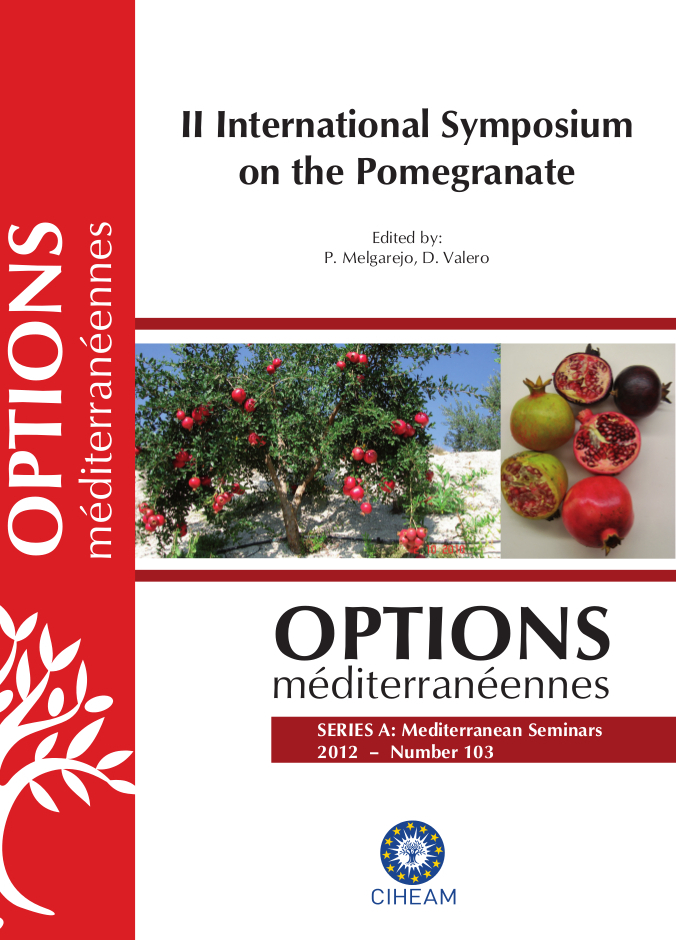| Article précédent | p. 117-120 | Article suivant |
Status and management of anthracnose of pomegranate in Karnataka State of India
Pomegranate is extensively cultivated around the Mediterranean and other parts of world including India. It is regarded as the "Fruit of Paradise".The most popular varieties in India are Ganesh, Mridula, Arakta, Bhagwa (Kesar). Successful cultivation of pomegranate in recent years has met with different problems such as pests and diseases. Among the various fungal diseases, anthracnose, caused by Colletotrichum gloeosporioides (Penz.) Penz. and Sacc., is one of the most serious disease of pomegranate, remaining latent in early stages of fruit development and reducing fruit quality to a greater extent. Propagules of pathogen cause lesions and decay of the fruit. The study was carried out in Karnataka State (India). The survey on the disease in the field showed the extent of anthracnose affecting the crop and quality of the fruits in different locations. The disease was widespread particularly in rainy season/high moisture conditions and incidence and severity disease were higher in Bagalkot district, followed by Koppal,Bijapur Gadag and Raichur districts. Studies on cultural, morphological, and physiological features of the pathogen showed maximum growth on Potato dextrose broth on the 12th day after incubation at 27±1ºC. C. gloeosporioides exhibited diversity with respect to cultural characters like type of the growth, mycelial colour, pigmentation and sporulation with maximum growth on Potato dextrose agar. The different days of incubation of culture filtrates of C. gloeosporioides differed in their action to inhibit the seed germination,root and shoot elongation of sorghum seeds and induction of phytotoxic symptoms on tomato seedlings. Among the tested fungicides, bioagents and botanicals, iprobenfos, propiconazole, carbendazim + mancozeb and T. viride were superior in inhibiting the mycelial growth of the fungus in vitro. carbendazim + mancozeb at 0.3 per cent and propiconazole at 0.1 per cent concentration were effective in reducing the percent disease index of anthracnose under field conditions.
- [ Afficher ]
- [ Télécharger ]
- [ Exporter la citation ]
Vous pouvez télécharger la citation au format :
- [ Imprimer ]
-
Mots-clés
ANTHRACNOSE, COLLETOTRICHUM, CONTROLE DE MALADIES, MALADIE FONGIQUECiter cet article
Nargund V.B., Jayalakshmi K., Venagi V.I., Byadgi A.S., Patil R.V. Status and management of anthracnose of pomegranate in Karnataka State of India. In : Melgarejo P. (ed.), Valero D. (ed.). II International Symposium on the Pomegranate. Zaragoza : CIHEAM / Universidad Miguel Hernández, 2012. p. 117-120. (Options Méditerranéennes : Série A. Séminaires Méditerranéens; n. 103). 2. International Symposium on the Pomegranate, 2011/10/19-21, Madrid (Spain). http://om.ciheam.org/om/pdf/a103/00006918.pdf



